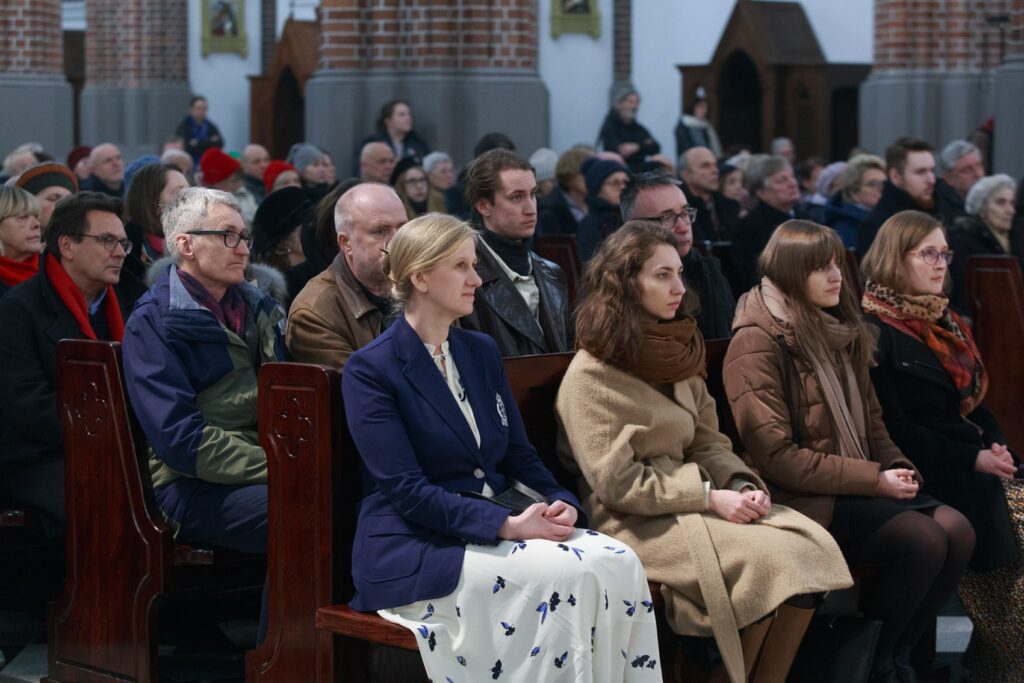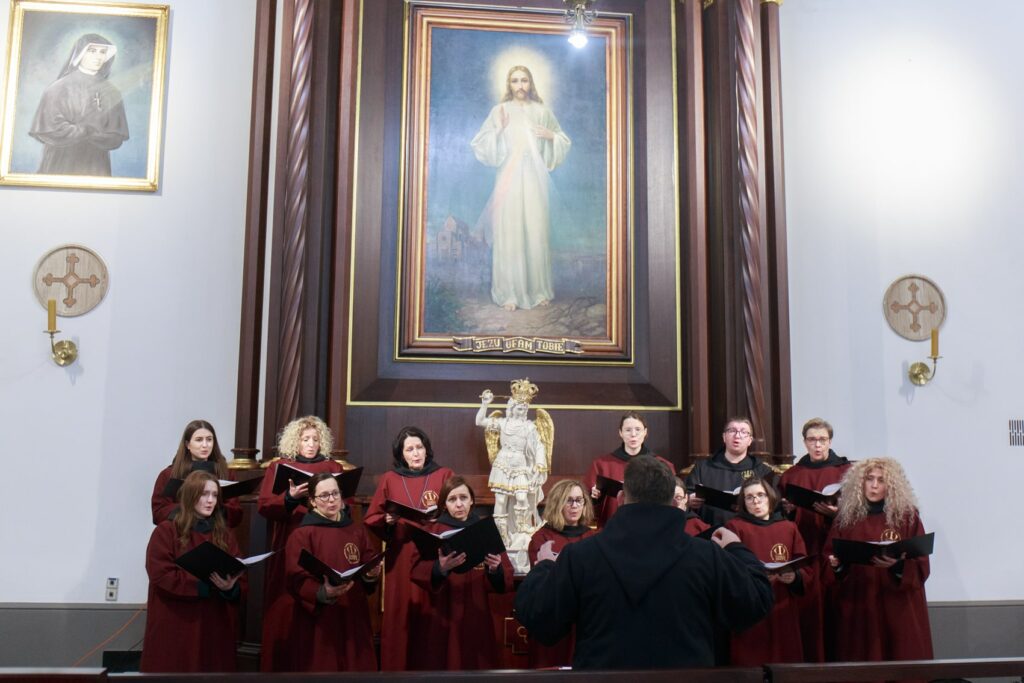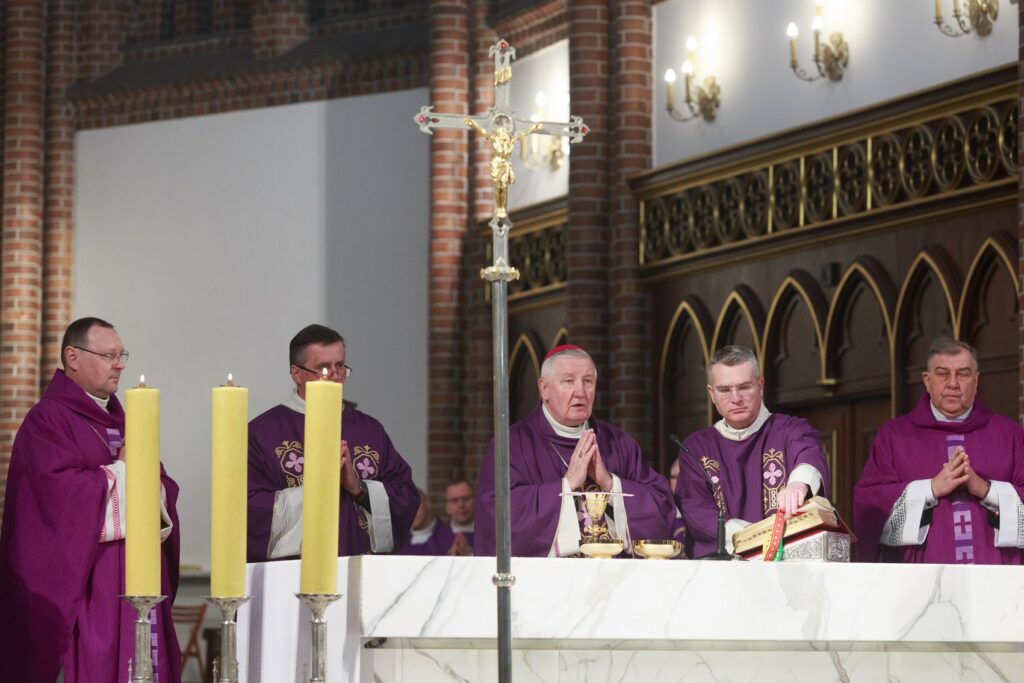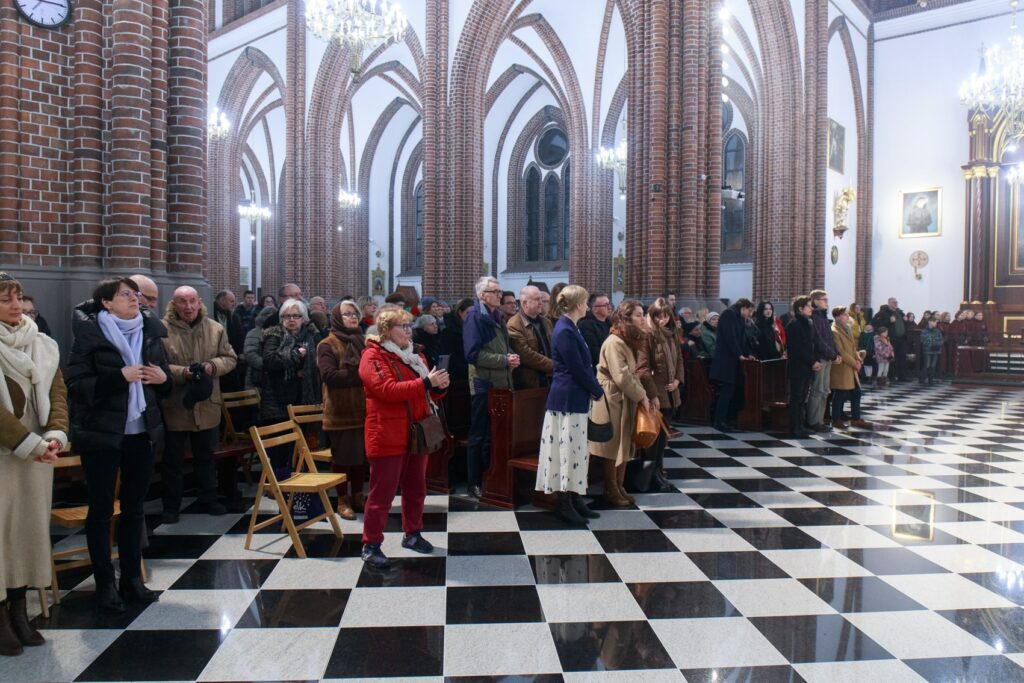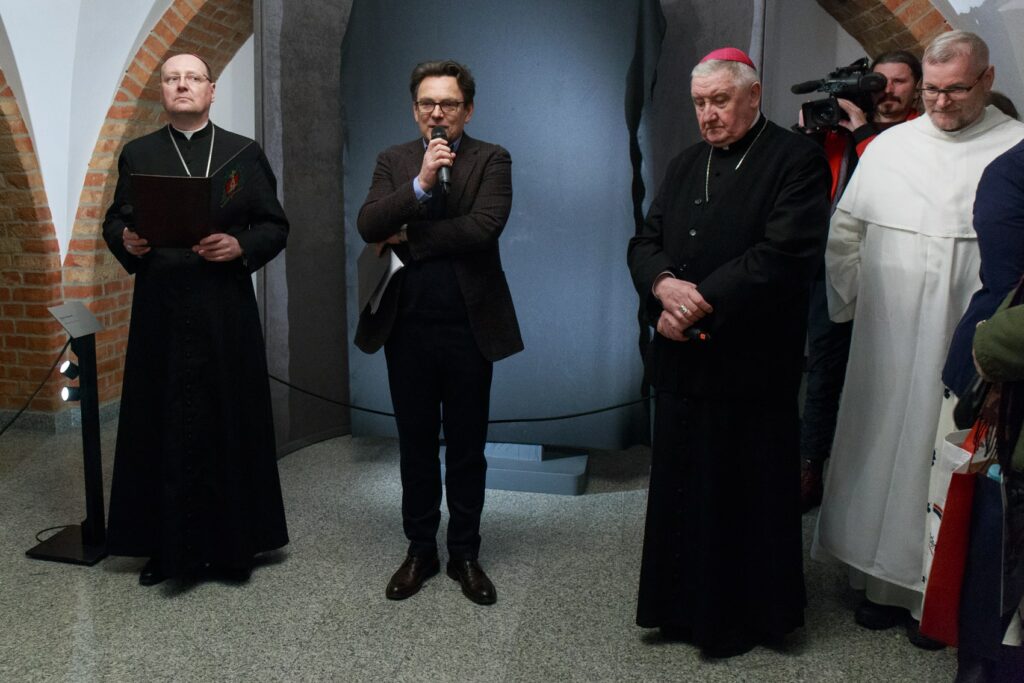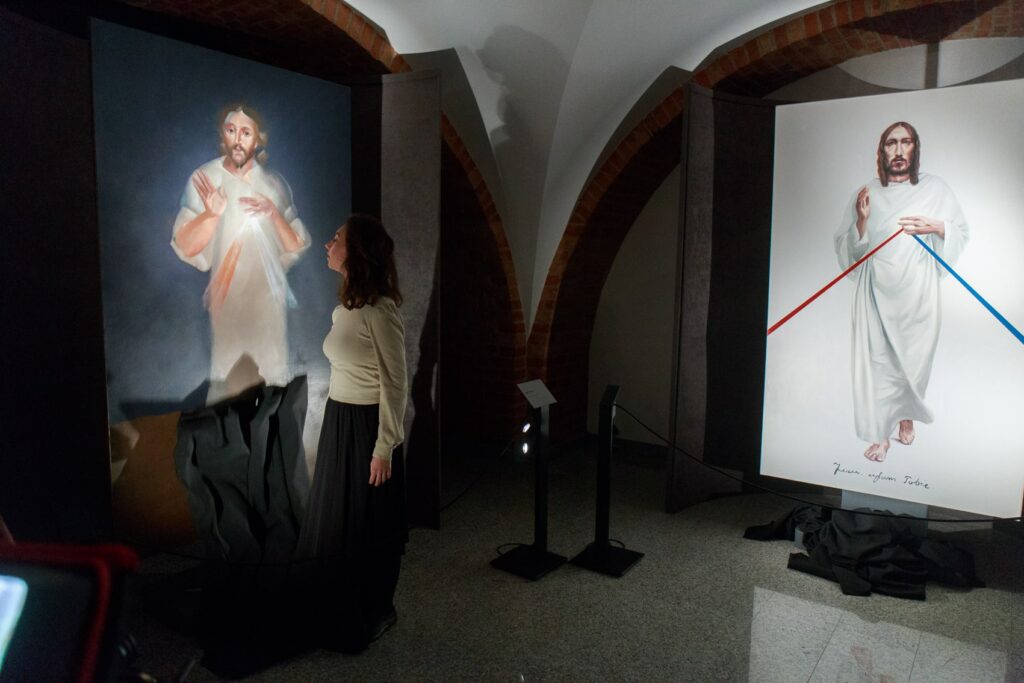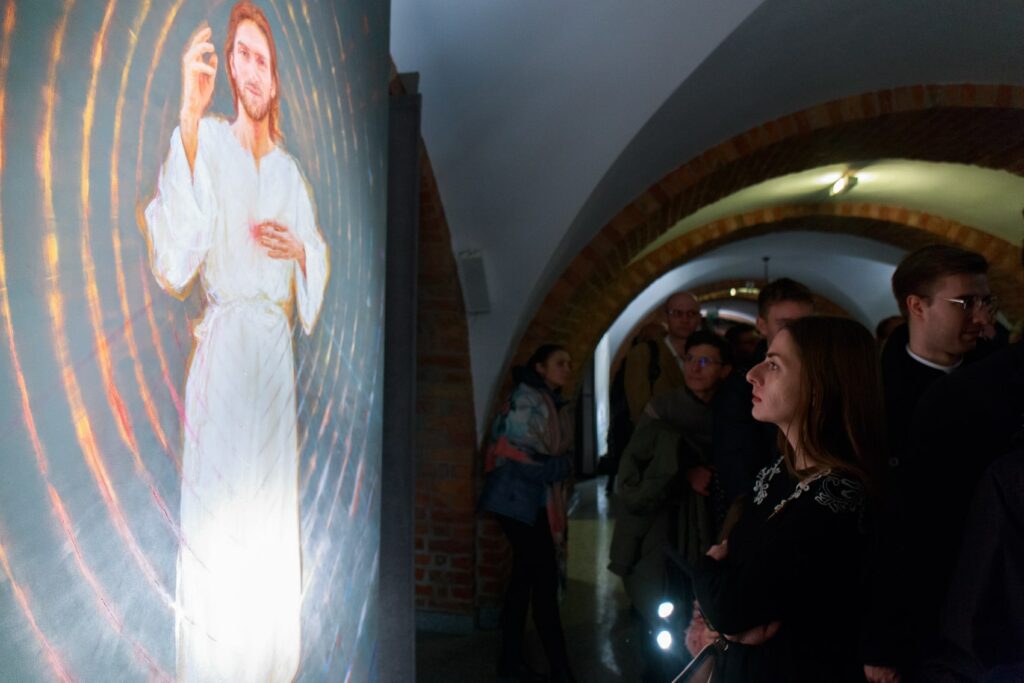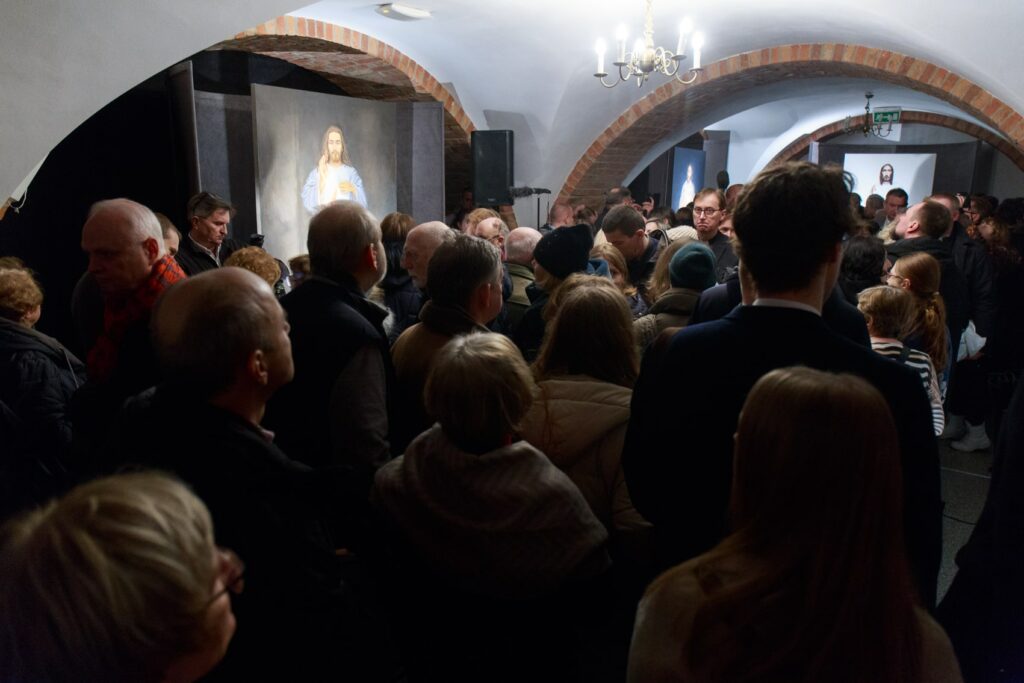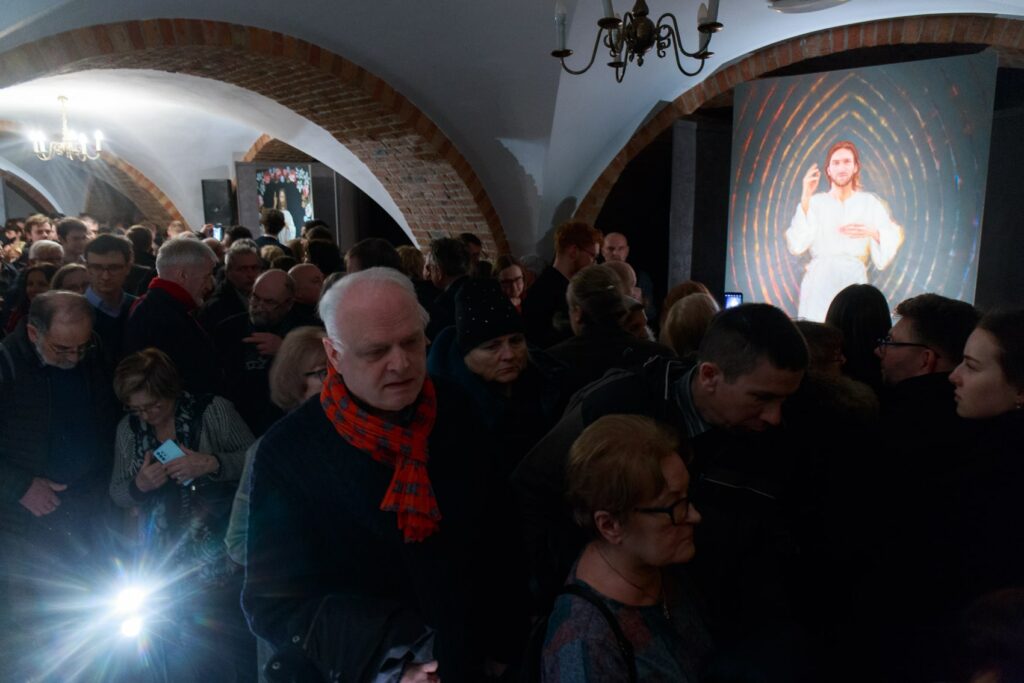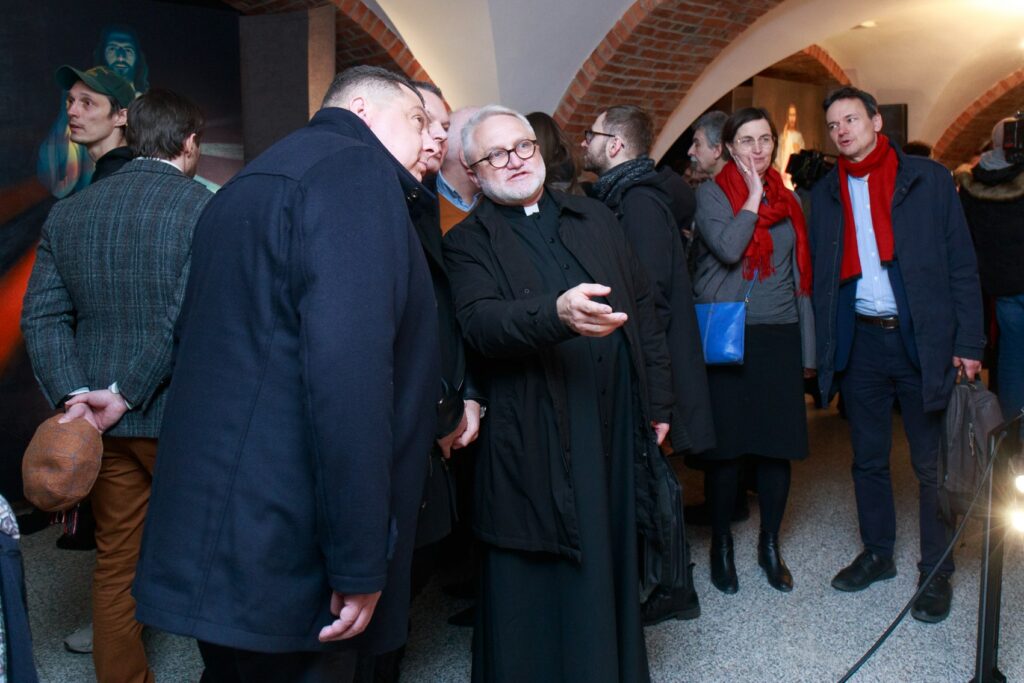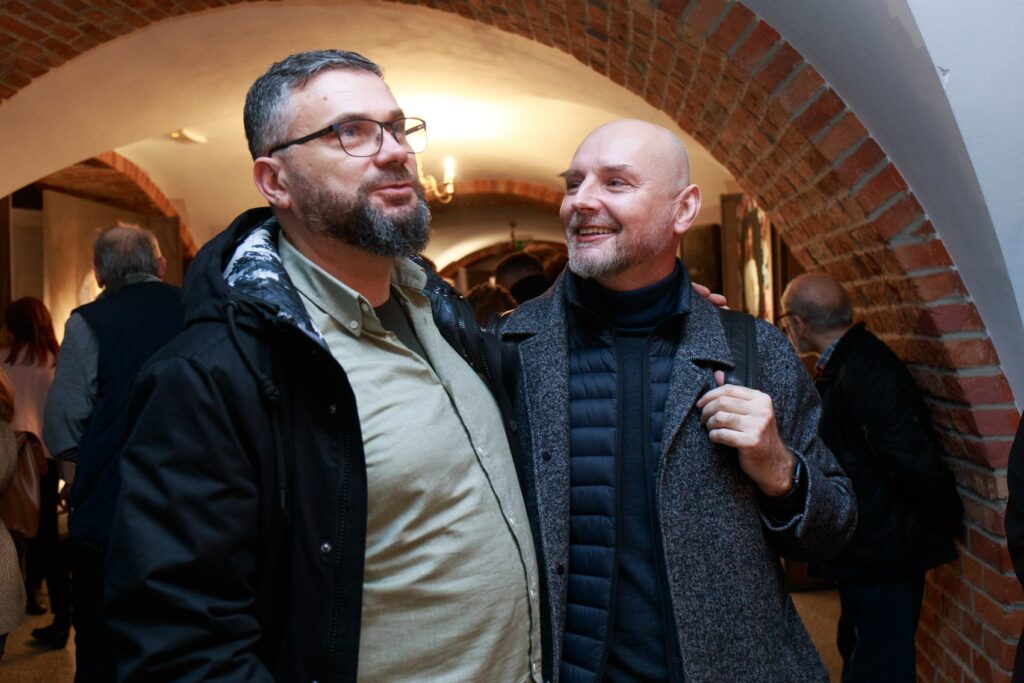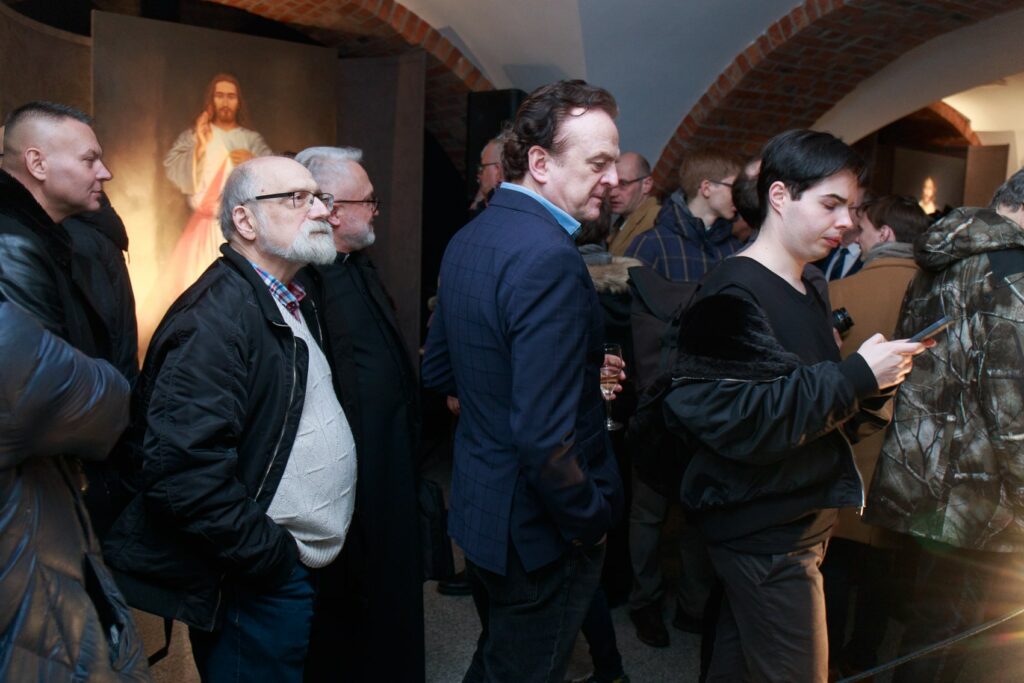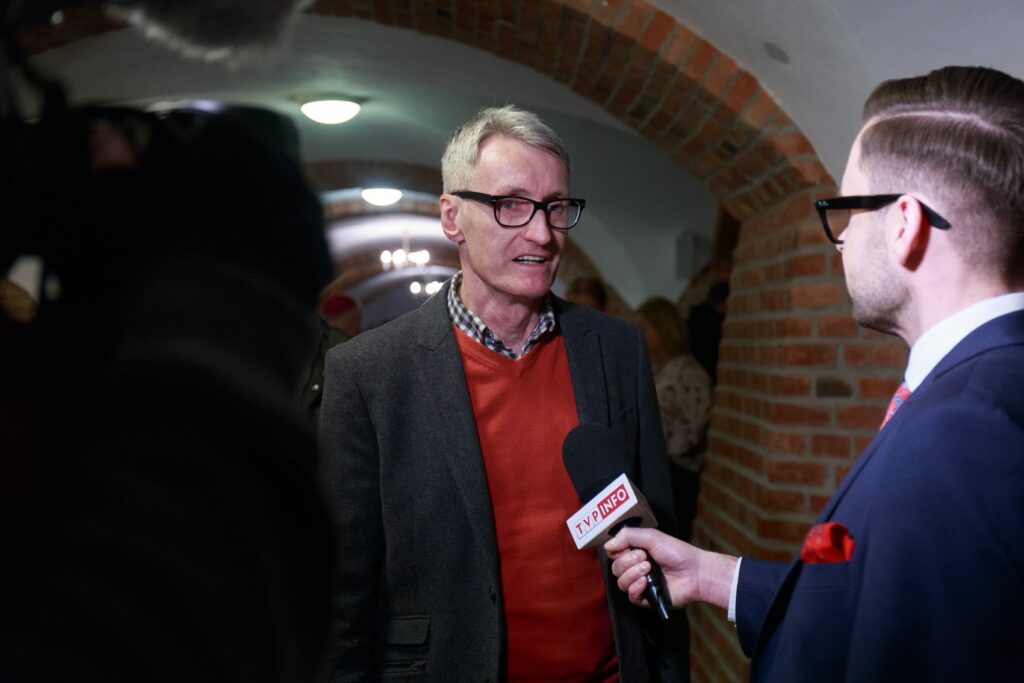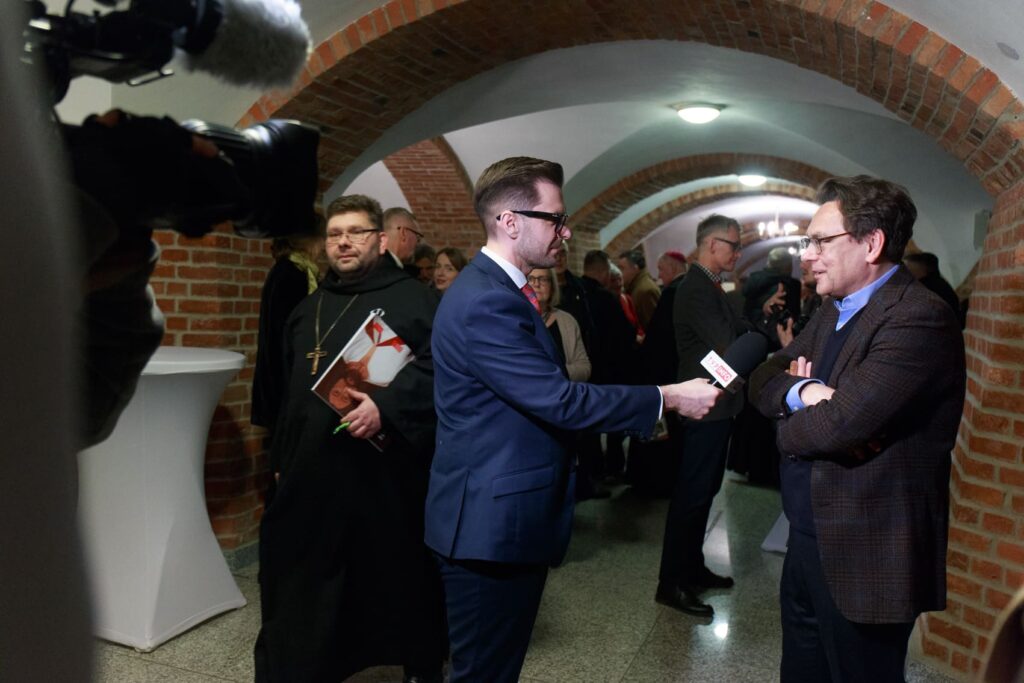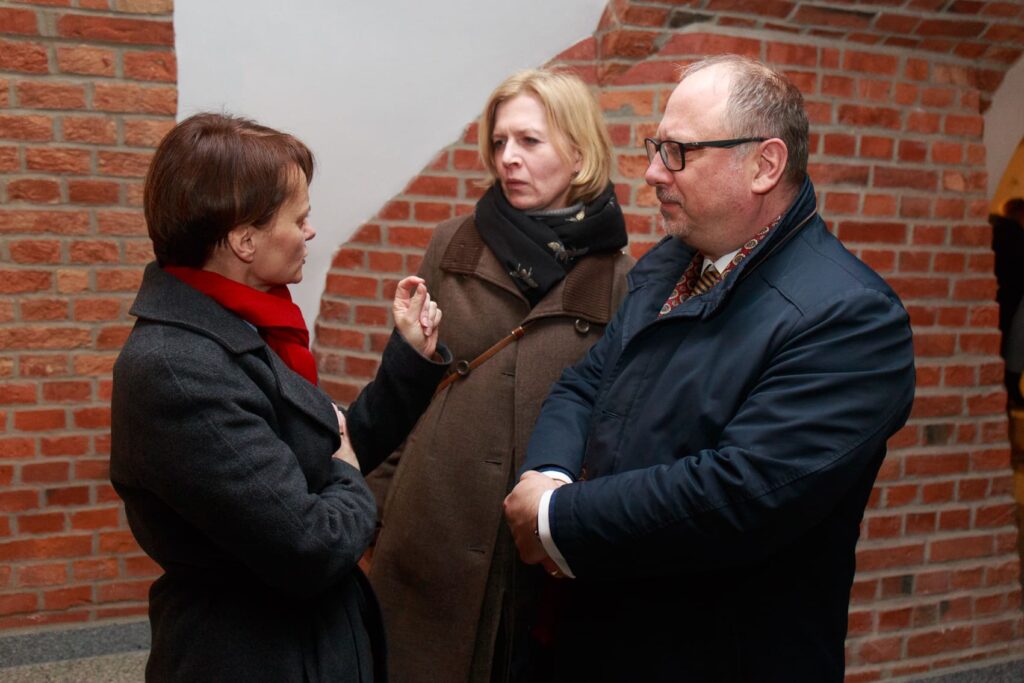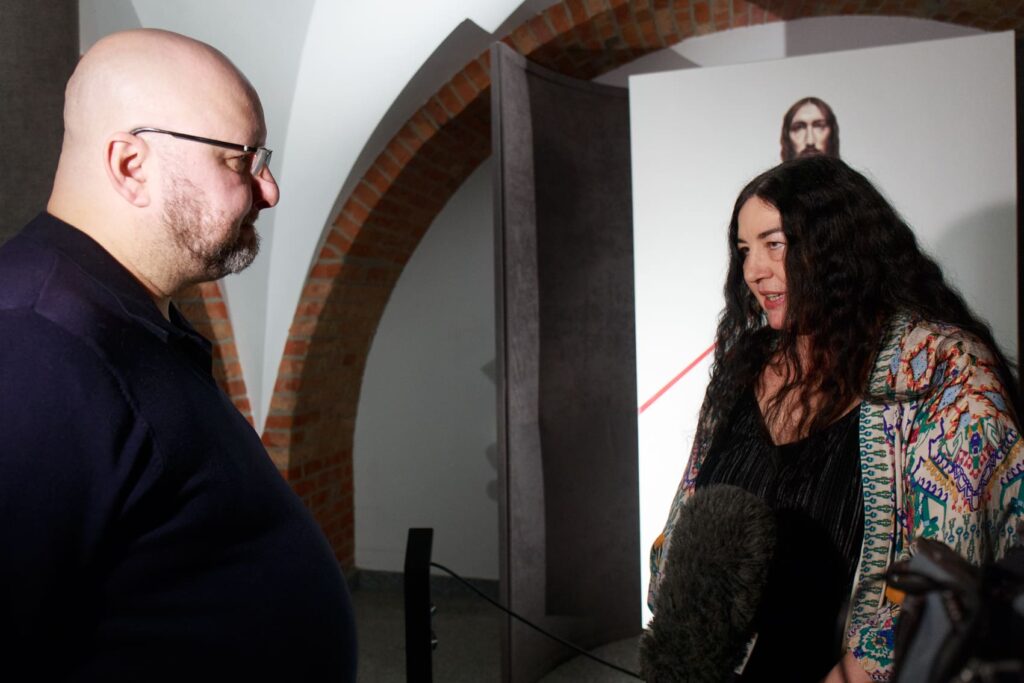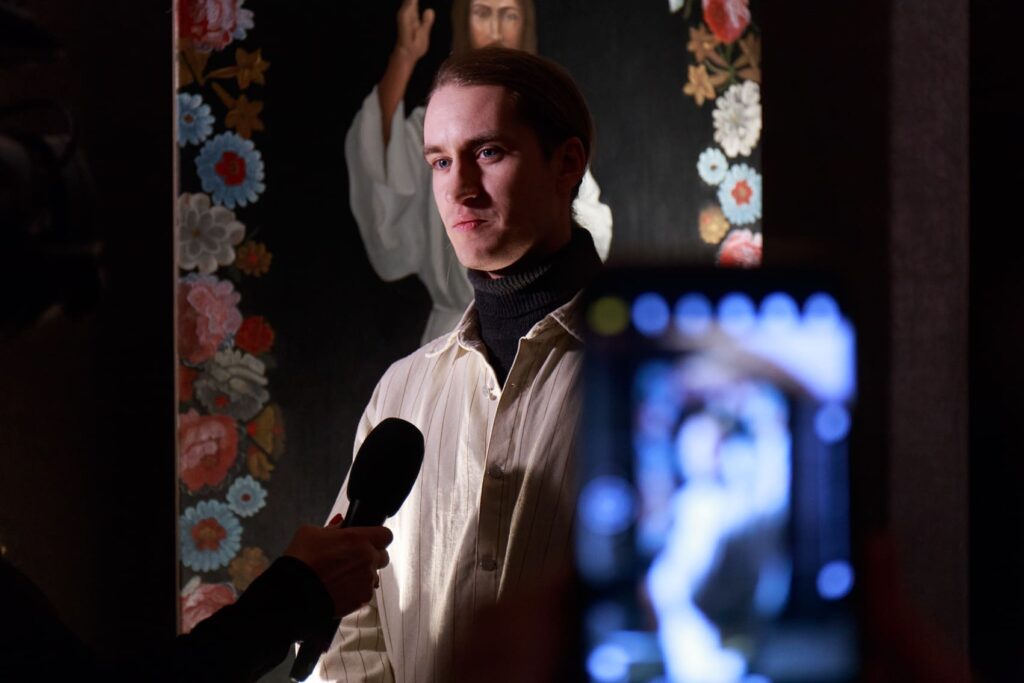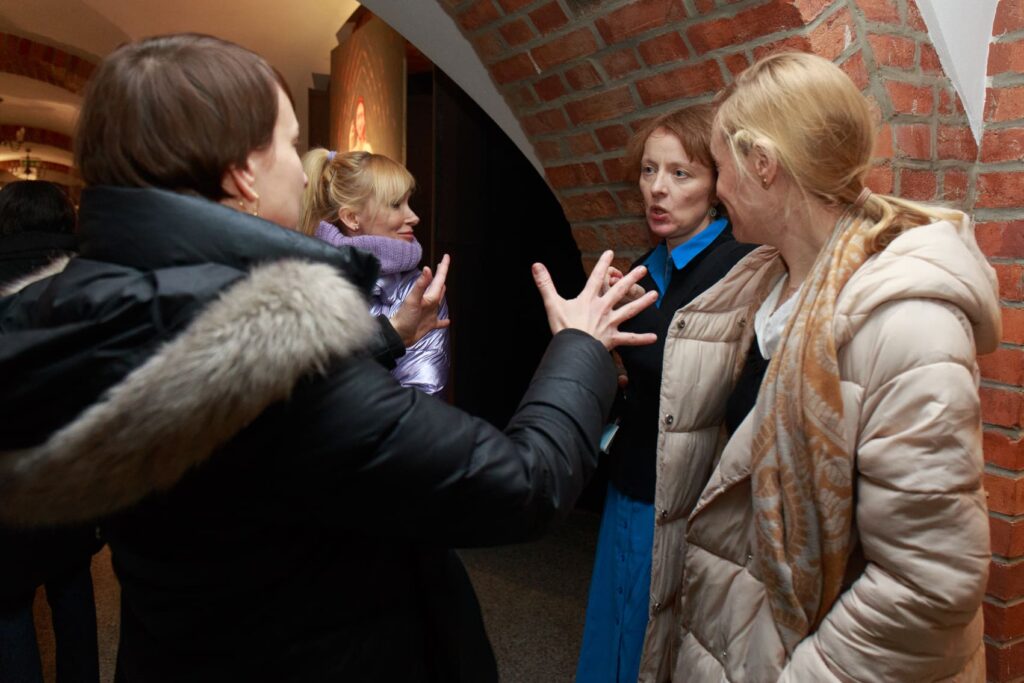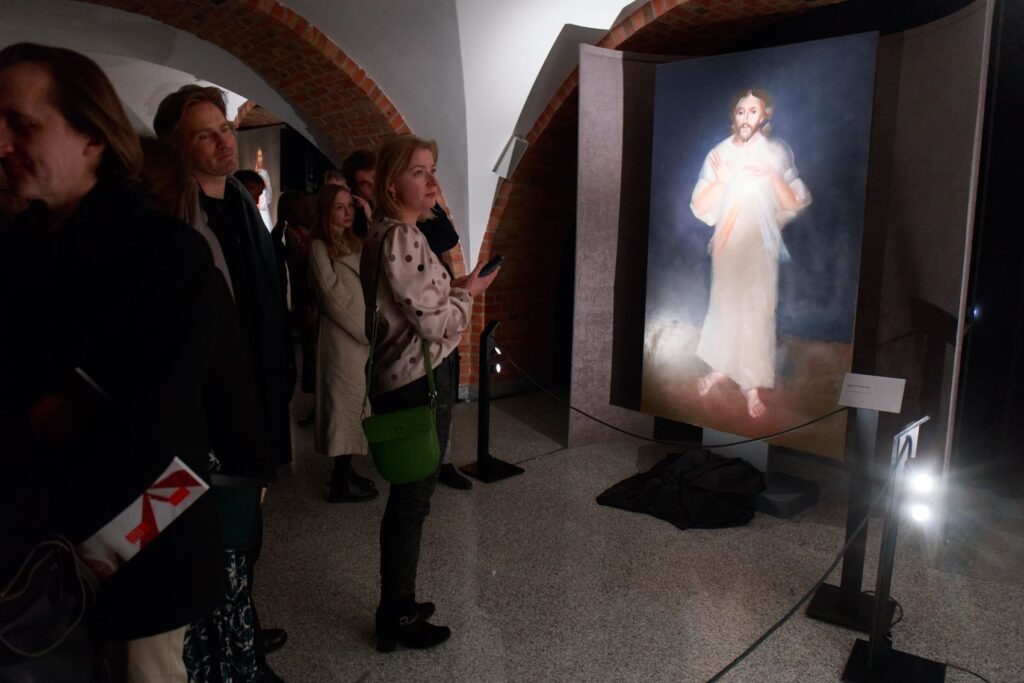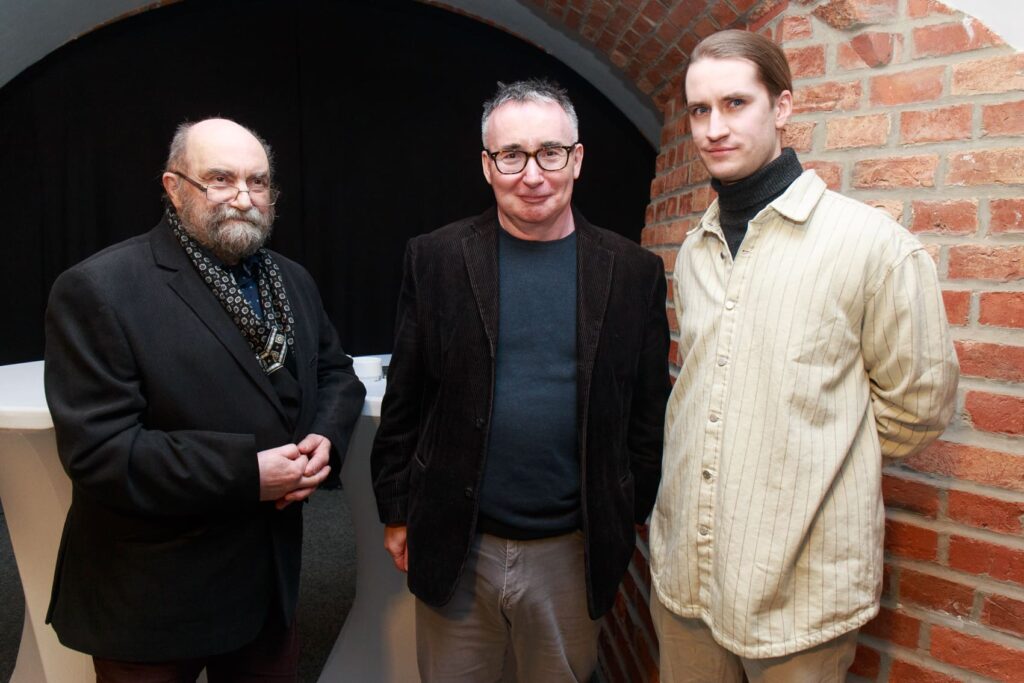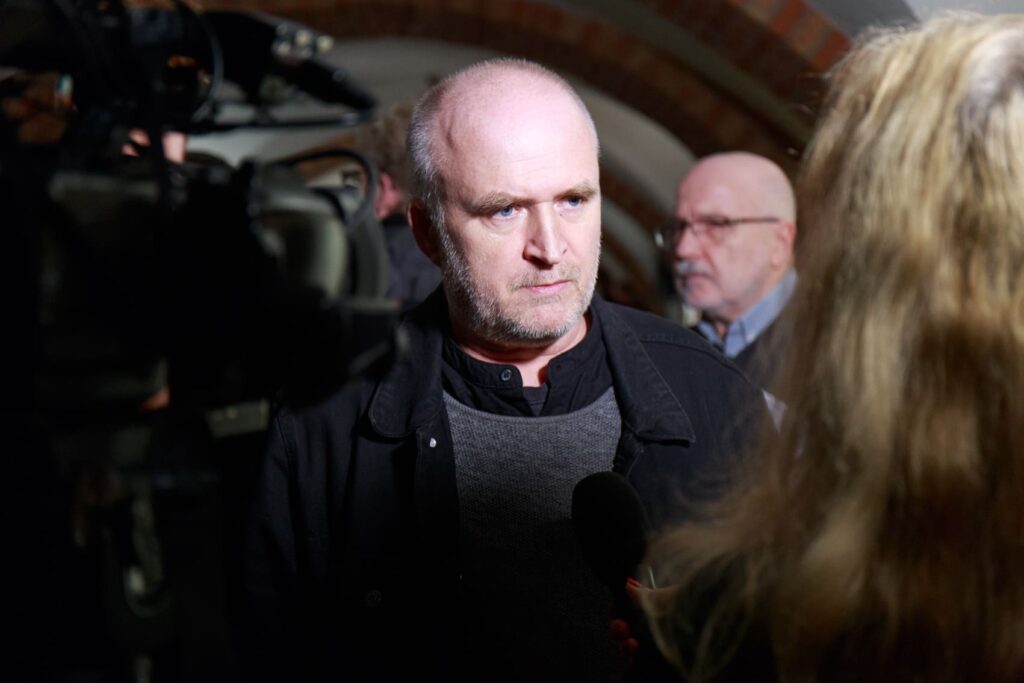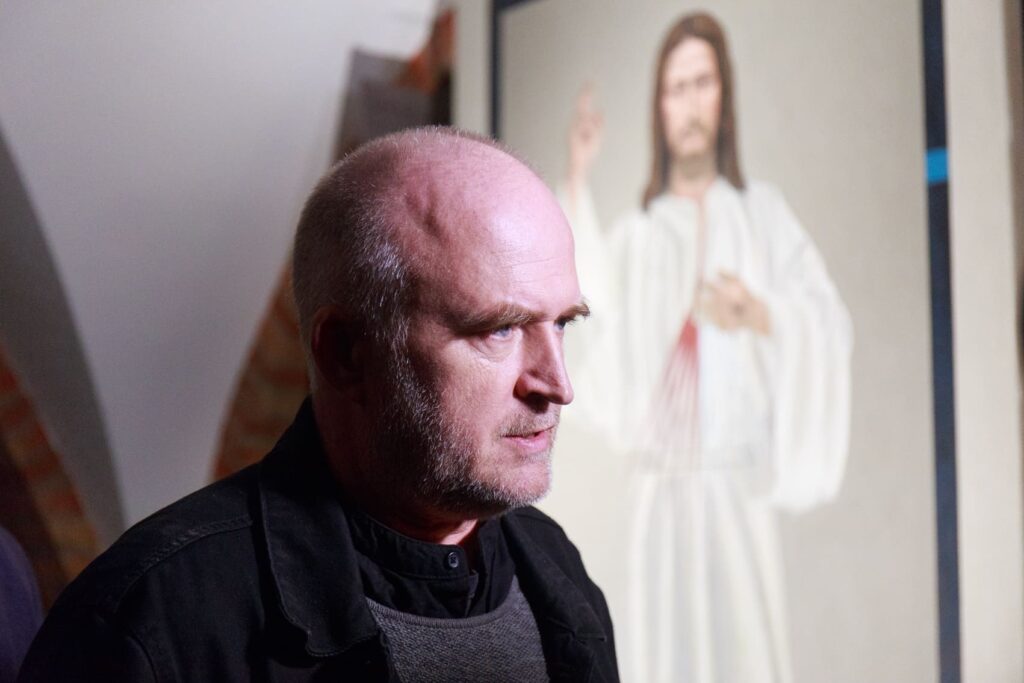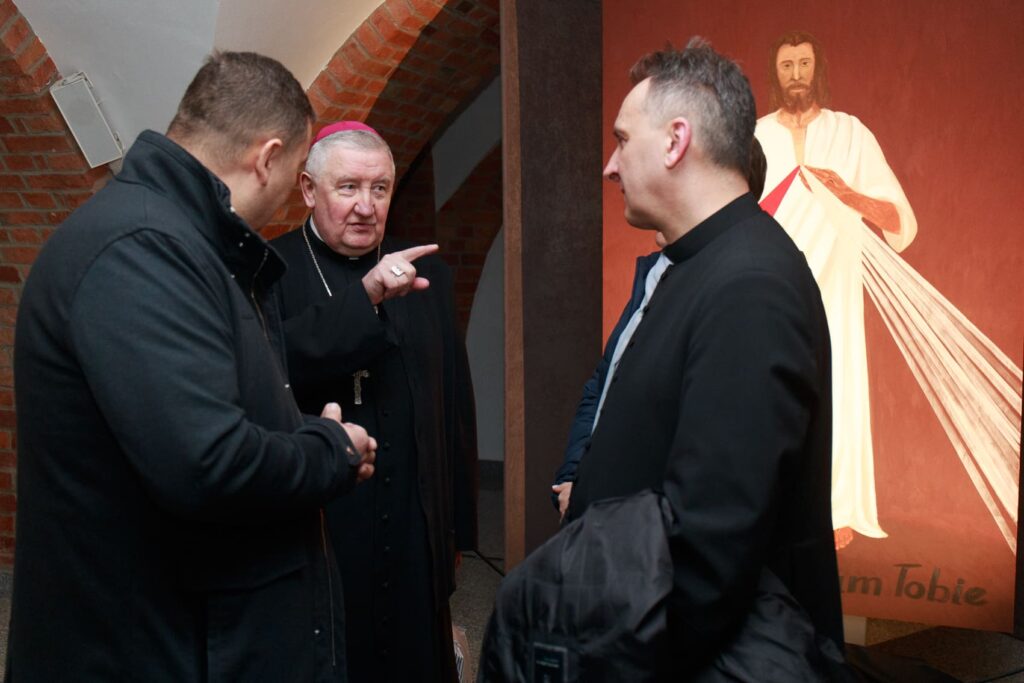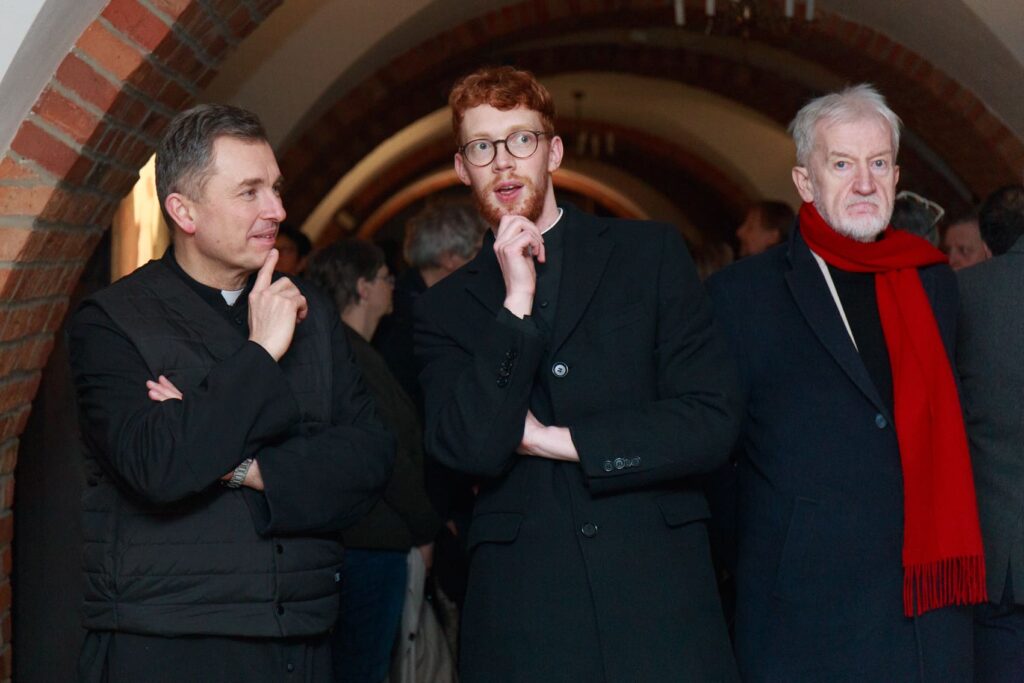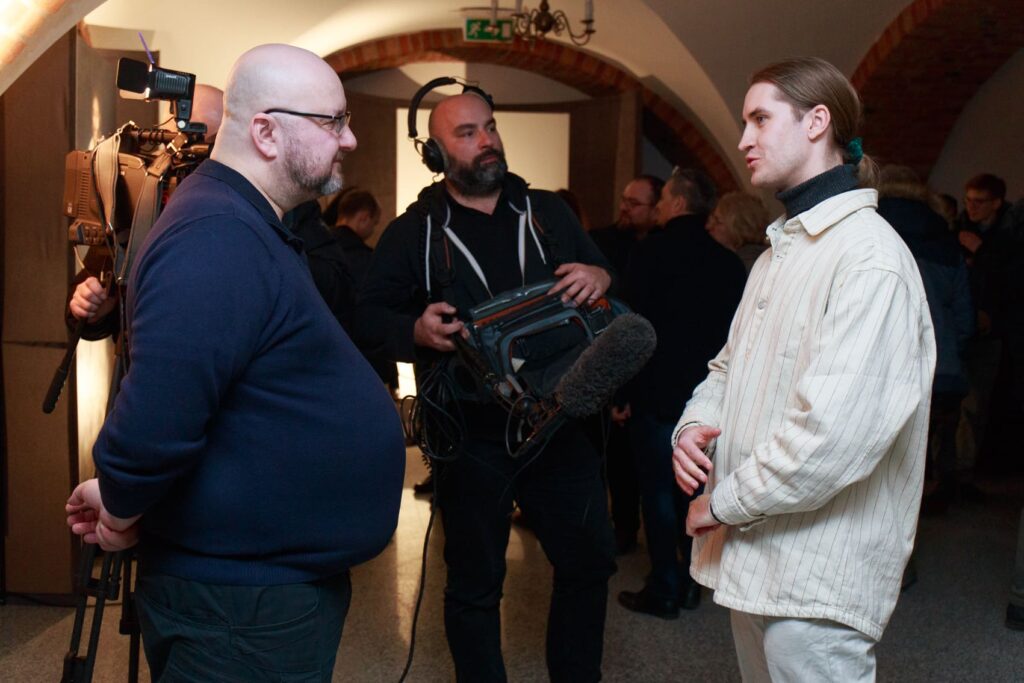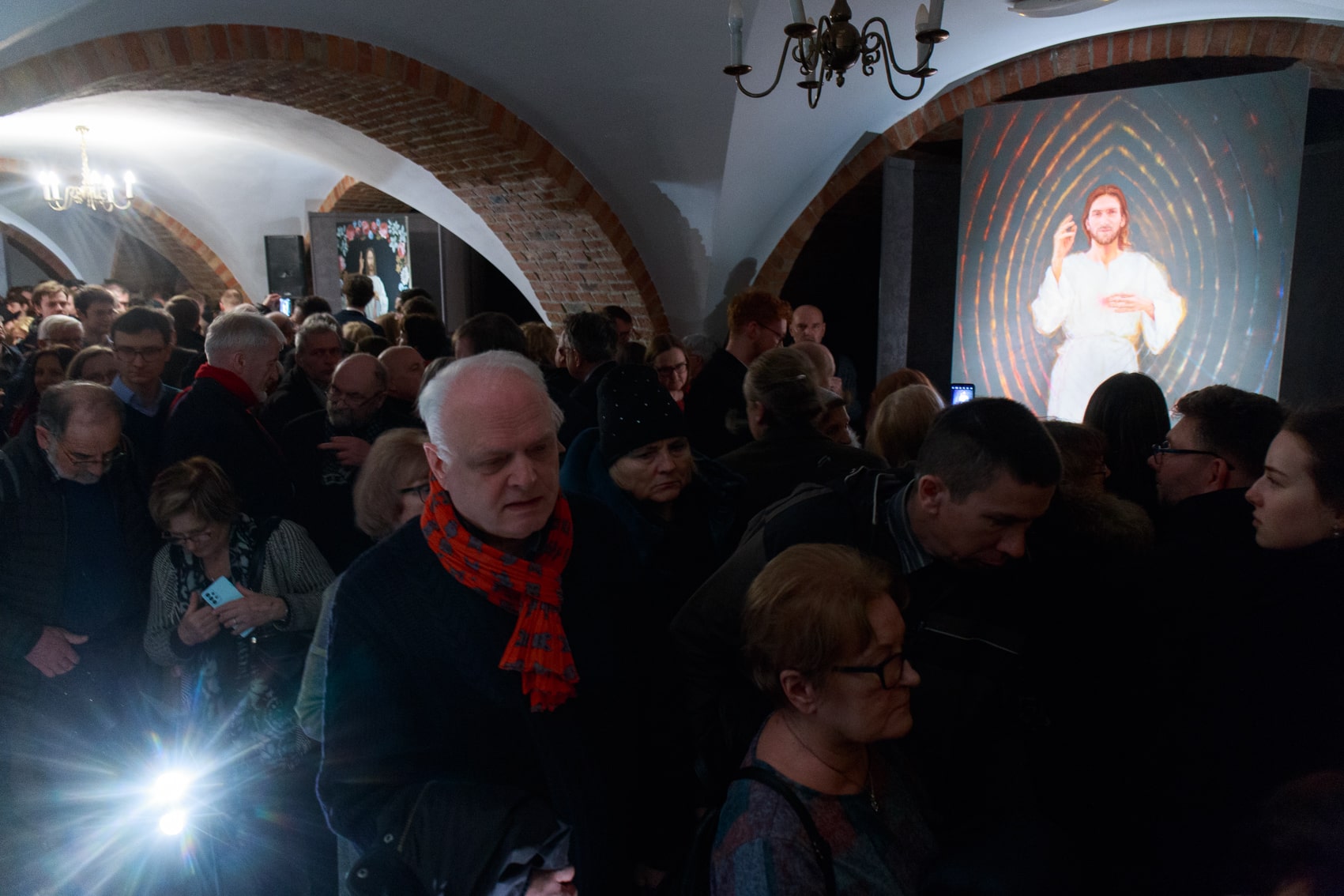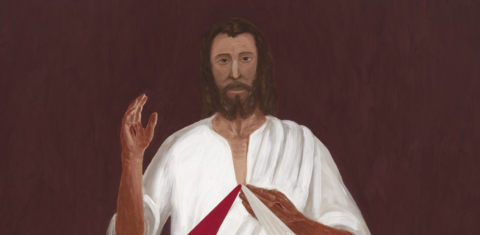On the evening of February 27, a ceremony was held in the undergrounds of the Warsaw-Praga Cathedral to unveil ten paintings of the Merciful Jesus created by Polish painters in accordance with the visions of St. Sister Faustina Kowalska. The opening of the exhibition was preceded by a Mass for the intention of the diocese and all those involved in the project “Let’s Paint Catholicism Again,” concelebrated by the bishop of the Warsaw-Praga diocese Romuald Kaminski and auxiliary bishop Jacek Grzybowski.
In the undergrounds of the cathedral, the gathered guests were welcomed by the initiator of the project, Dariusz Karlowicz. He stressed the difficulty of the task that the painters undertook – a difficulty resulting primarily from the fact that the image of the Merciful Jesus is the center of worship, which is the most important form of piety at the turn of the 20th and 21st centuries. The fact that there is an established performance practice for the painting, that the surrounding culture is becoming increasingly secularized, that sacred art in Poland – with noble exceptions – does not exist, makes the challenge facing the painters even more difficult. The most difficult thing, however, according to Karlowicz, is to contain the infinite in a work of painting, to tell in artistic form what cannot really be told in words and pictures. As the founder of Political Theology put it: “Sister Faustyna Kowalska wept as she looked at Eugeniusz Kazimirowski’s painting. But not over the painting and the image itself. As one who ‘saw,’ she wept over all those who tried to ‘look behind the veil’ of the mystery of the invisible.” It was behind this veil that the painters, whose works can be seen in the basement of the cathedral, tried to look, for which they deserve great applause.
During the opening of the exhibition, special thanks were given to Prof. Jaroslaw Modzelewski, who not only agreed to take part in this “spiritual and artistic adventure,” as Dariusz Karlowicz described the project, but also invited six other prominent Polish painters to participate. Thunderous applause was once again given to all the artists of the project: the aforementioned Jaroslaw Modzelewski, Bogna Podbielska, Beata Stankiewicz, Ignacy and Wincenty Czwartos, Jacek Dluzewski, Wojciech Glogowski, Father Jacek Hajnos, Krzysztof Klimek and Artur Wąsowski.
The organizers of the exhibition also thanked the key sponsors of the exhibition – Mr. Sebastian Skwara, Mariusz Kocielnik and Anonymous Donor – as well as the main donors of the entire project “Let’s Paint Catholicism Again”: Danuta and Krzysztof Domarecki, Jolanta Domańska-Gruszka and Mirosław Gruszka, Wojciech Piasecki, Dorota and Tomasz Zdziebkowski. Among the benefactors of the exhibition, hosts and patrons from the Warsaw-Praga Diocese were also mentioned, with special mention of Bishop Romuald Kaminski and Bishop Jacek Grzybowski.
Dariusz Karlowicz also did not forget the parish priests who decided to purchase the paintings for their parishes. He expressed admiration for their “courage, imagination and verve.” Thanks to them, seven paintings will soon adorn the walls of several temples. Significantly, the paintings created as part of the “Let’s Paint Catholicism Again” project are only the first step toward a much larger undertaking. The next paintings will be dedicated to the 20 mysteries of the Holy Rosary.
Bishop Jacek Grzybowski also spoke, reminding that Christianity and art meet on many levels, and are united by their reverence for truth, freedom, beauty and delight in God’s epiphany. The bishop stressed that culture without transcendence becomes empty, and Christianity without culture becomes mute. This is why the Warsaw exhibition of paintings of the Merciful Jesus and the initiative proposed by Political Theology for a “renaissance of Catholic sacred painting” are so important, and why one should try with all one’s might to ensure that the separation of culture and Christianity never happens. The opening is a testimony to the fact that, contrary to appearances, sacred art is not a phenomenon belonging to the past, and that the message of Divine Mercy, which is hidden in the paintings and whose importance was emphasized by the great figures of faith, St. Sister Faustina and St. John Paul II, is still relevant. The event serves as a reminder that there is no other salvation for man than mercy. The bishop expressed gratitude to the organizers for inviting the diocese to collaborate, and thanked the artists for their talent and sensitivity, revealing anew the beauty of the mystery hidden in the image of Merciful Jesus.
Just before the official unveiling of the paintings, Bishop Romuald Kaminski invoked the intercession of St. John Paul II, Blessed Michael Sopoćko and the spiritual patroness of the project – St. Faustina, to conclude with the words to those gathered: “Now silence should fall, so that we can give ourselves to contemplation.”
Summary: Aniela Łukowska
Photos: Jacek Łagowski
_______________________________
When: February 27 – April 02, 2023.
Where: Cathedral Basilica of St. Michael the Archangel and St. Florian the Martyr in Warsaw, 3 Florianska St.
The exhibition will be open on:
Monday-Saturday 12:00 PM – 8 PM
Sunday 8 AM – 9:30 PM
Admission is free!
____________
The St. John Paul II Institute of Culture is an interdisciplinary scientific and didactic institution established at the Faculty of Philosophy of the Pontifical University of St. Thomas Aquinas (Angelicum) in Rome on the centenary of the birth of John Paul II. The mission of the Institute is to reflect on the most important problems of the contemporary Church and the world inspired by the life and thought of St. John Paul II.Thus, the Institute’s aim is not only to study the achievements of the Great Pope, but also to think with him about the most important issues of spiritual culture, e.g. solidarity, mercy, Christian art, the place of the Church in the modern world or the spiritual crisis of Europe.The Institute is co-managed by the Saint Nicholas Foundation (publisher of Teologia Polityczna) and funded entirely by private donors from Poland. We warmly invite you to join their ranks!
